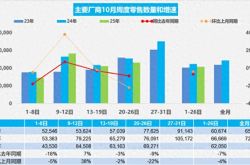Export License Management for Electric Passenger Vehicles: A Shift from Scale to Quality in Exports
![]() 09/28 2025
09/28 2025
![]() 556
556
Produced by Zhineng Technology
In recent years, China's new energy vehicle export sector has witnessed remarkable growth, with electric passenger vehicles emerging as the dominant category in vehicle exports. This development has played a pivotal role in stabilizing foreign trade and enhancing the export structure.
However, this rapid expansion has also brought to light several challenges, including uncontrollable overseas market destinations, inadequate after-sales services, and intense low-price competition.
In September 2025, four departments, including the Ministry of Commerce, announced that effective from 2026, pure electric passenger vehicles will be subject to export license management. This move signifies a crucial turning point for China's pure electric vehicle exports, transitioning from a focus on 'scale expansion' to 'quality prioritization'.

01
Current Status and Challenges in Electric Passenger Vehicle Exports
Why is License Management Essential?
Over the past five years, China's new energy vehicle exports have soared, as demonstrated by the following specific data. This surge has not only expanded export volumes but also raised average vehicle prices and enhanced China's automotive presence on the global stage.

Nevertheless, several structural issues have emerged amidst this rapid growth:
◎ Undefined Export Destinations: Since electric passenger vehicles are not currently included in the import and export license catalog, some OEMs face difficulties in managing the overseas deployment of their products. Vehicles designed for the Chinese market may encounter environmental or regulatory mismatches when exported, leading to quality and safety concerns.
◎ Inadequate Overseas Services: Many companies have been slow to establish after-sales networks, leaving consumers with unresolved issues and tarnishing brand reputation.
◎ The Peril of 'Low-Price Dumping': Some automakers, unable to sell domestically, resort to flooding overseas markets with low-priced vehicles (including zero-kilometer used cars) while fabricating stories for capital markets. This approach may boost short-term sales figures but exacerbates international price wars, provides grounds for anti-dumping investigations and tariff hikes in Europe and South America, and undermines long-term competitiveness.
As competition intensifies, relying solely on quantity, both domestically and overseas, becomes increasingly untenable. A shift from 'quantity competition' to 'quality competition' is imperative, not only among enterprises but also in alignment with national trade policies and industrial chain upgrades.
The true challenge lies in maintaining export scale while ensuring high-quality products and services for new energy vehicles.
02
Significance and Impact of Export License Management
The Ministry of Commerce, Ministry of Industry and Information Technology, General Administration of Customs, and State Administration for Market Regulation have jointly implemented a policy: Starting January 1, 2026, pure electric passenger vehicles will require export licenses.
In essence, all exported vehicles must first obtain a license; those without will be prohibited from shipping overseas. This policy aims not only to control export volumes but also to rectify the export structure.
Firstly, it raises industry barriers. Only companies with comprehensive manufacturing qualifications, compliance capabilities, and overseas operational networks will meet the criteria. Pure trading intermediaries will no longer be sufficient.
Exporting pure electric vehicles necessitates established sales and after-sales networks overseas, with quality and compliance as top priorities. Exported vehicles must pass CCC certification and adhere to target market standards, such as the EU's CE requirements, necessitating substantial investment in R&D and testing. This prevents substandard goods from causing trade disputes and damaging brand reputation.
The system prevents the 'bad money drives out good' scenario in overseas markets, steering the industry towards a 'quality-first' approach.
This policy encourages companies to deepen overseas localization. Exporting involves not just shipping vehicles but also providing after-sales, spare parts, financing, and other support. License requirements mandate these capabilities, fostering closer integration with local markets. From 'exporting' to 'embedding' and finally 'thriving,' Chinese new energy automakers must transition from scale-driven strategies to user-centric value delivery.
Of course, initial implementation may cause some disruptions. Companies will need to revamp their processes and prepare necessary materials, with inexperienced players potentially experiencing slowed exports or even exiting the market.
Car sales figures may slightly decline in early 2026, but in the long run, this will guide the industry onto a stable and sustainable path, weathering international market volatility. The policy also reflects the state's strategic vision for new energy vehicles.
By regulating exports, China can not only achieve smooth domestic dual-circulation but also position itself in the global supply chain with high standards.
Summary
Export license management for electric passenger vehicles marks a pivotal turning point for China's new energy vehicles, transitioning from 'wild growth' to 'steady progress.' It addresses issues such as chaotic export flows, low-price disruptions, and inadequate services, laying a solid foundation for industry overseas expansion.
While short-term adjustments may strain some companies, with individual players exiting or growth slowing, the medium- to long-term outlook sees resources flowing to top performers, driving R&D and certification advancements, establishing overseas service networks, and fostering sustainable international competitiveness.








